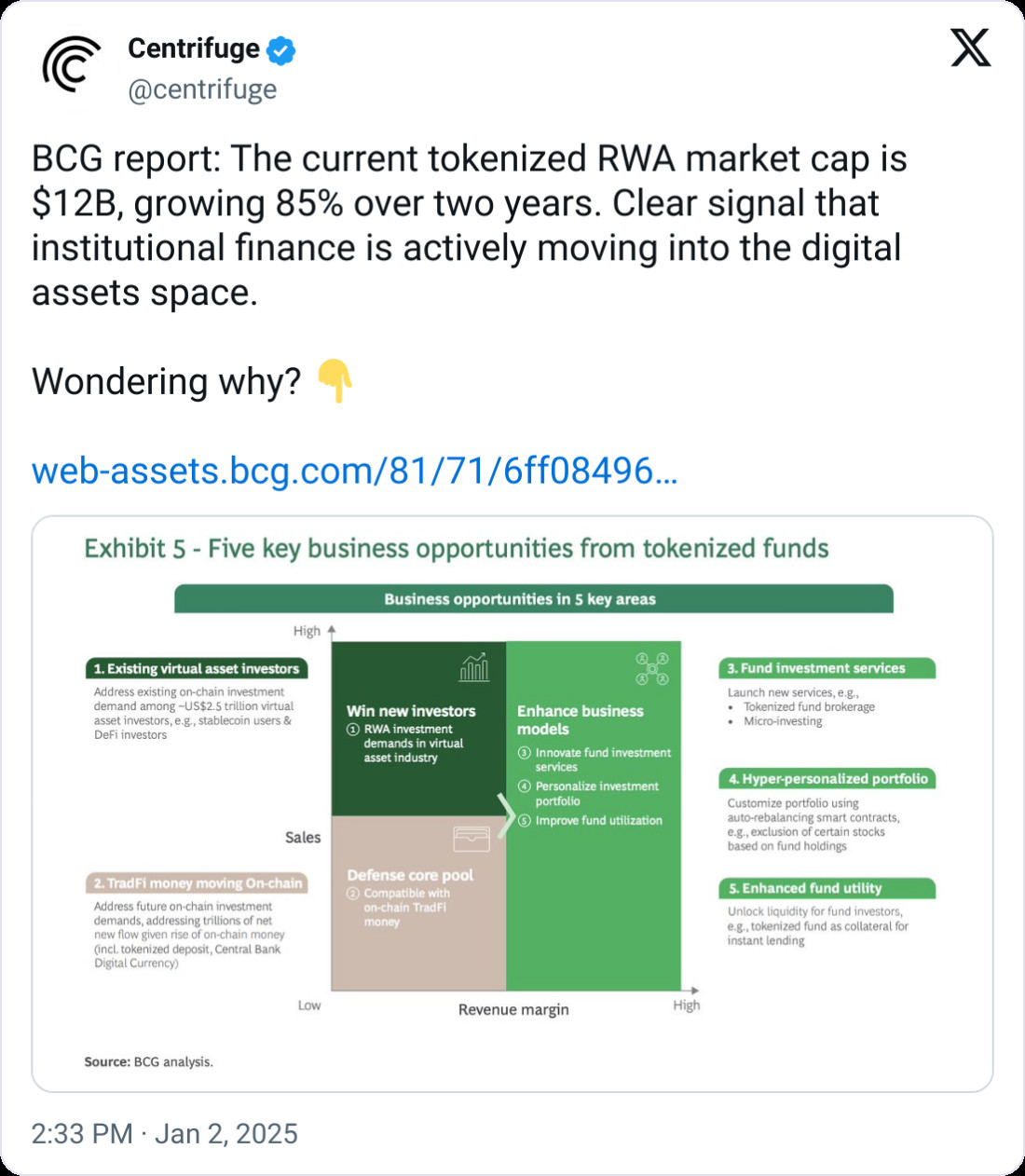The Future of Real-World Asset Tokenization: What to Expect in 2025

The tokenization of real-world assets (RWA) is making waves in traditional finance, bridging the divide between conventional markets and decentralized finance (DeFi). As we approach 2025, industry experts predict a pivotal shift—not just in the types of assets being tokenized but also in the regulatory landscape shaping their growth.
To understand the road ahead, Cointelegraph sat down with Eli Cohen, general counsel of Centrifuge—a platform specializing in RWA tokenization—to explore upcoming trends that could redefine the market.
A Market on the Move
Cohen believes that RWAs currently provide the underlying yield for DeFi’s biggest stablecoins, particularly through tokenized Treasuries. But 2025 could change the game.
With investors demanding higher returns, Cohen anticipates a surge in the variety of tokenized products. High Treasury rates and increasing competition among stablecoin issuers are pushing the industry toward “higher yielding, yet still safe investments,” creating new opportunities for both institutional and retail investors.
“This will open up banking and brokerage channels to spur the creation of many more tokenized products.”
The evolving landscape could bring increased liquidity, accessibility, and transparency to global financial markets—key factors solidifying the importance of RWA tokenization.
 RWA Market Growth
RWA Market Growth
RWA’s market cap has grown 85% over two years. Source: Centrifuge
A New Regulatory Climate: Trump’s Influence and Gensler’s Departure
The political and regulatory shifts in the United States could create a more welcoming environment for RWAs. Cohen foresees a reversal of restrictive policies, particularly as the incoming Trump administration moves away from initiatives like Operation Chokepoint 2.0.
With Gary Gensler expected to leave his role at the U.S. Securities and Exchange Commission (SEC), Cohen predicts a different approach to financial oversight. “The open hostility of the Gensler SEC will be gone,” he explains, adding that this change may help TradFi firms overcome internal resistance to engaging with crypto markets.
But the key question remains: Will the Trump SEC go so far as to approve a tokenized security retail offering?
Beyond the U.S., European regulators will also be a crucial force. As the EU moves forward with MiCA (Markets in Crypto-Assets) regulations, how authorities enforce these rules could significantly impact the future of tokenized assets.
A Breakthrough Year for RWA Tokenization
The momentum behind RWA tokenization is undeniable. Take, for instance, the $1 billion deal between Mantra and Damac to tokenize Middle Eastern assets. Such deals highlight the increasing institutional adoption of tokenized assets, a trend likely to accelerate throughout 2025.
Cohen also stresses that concerns about security and trust in the space will gradually be alleviated as crypto service providers mature. With major centralized exchanges like Coinbase and Kraken already being used by governmental authorities, establishing regulatory trust in tokenization might just be a matter of time.
Final Thoughts
As 2025 approaches, real-world asset tokenization stands at a crucial juncture. The appetite for diversified, higher-yield investments is growing, regulatory conditions are shifting, and institutions are increasingly recognizing the potential of tokenized assets.
With all these factors in play, the coming year could mark a historic turning point—one where finance takes another giant leap toward blockchain-powered efficiency, accessibility, and inclusivity.
Are RWAs poised to become the backbone of DeFi? All signs point to a resounding yes.

